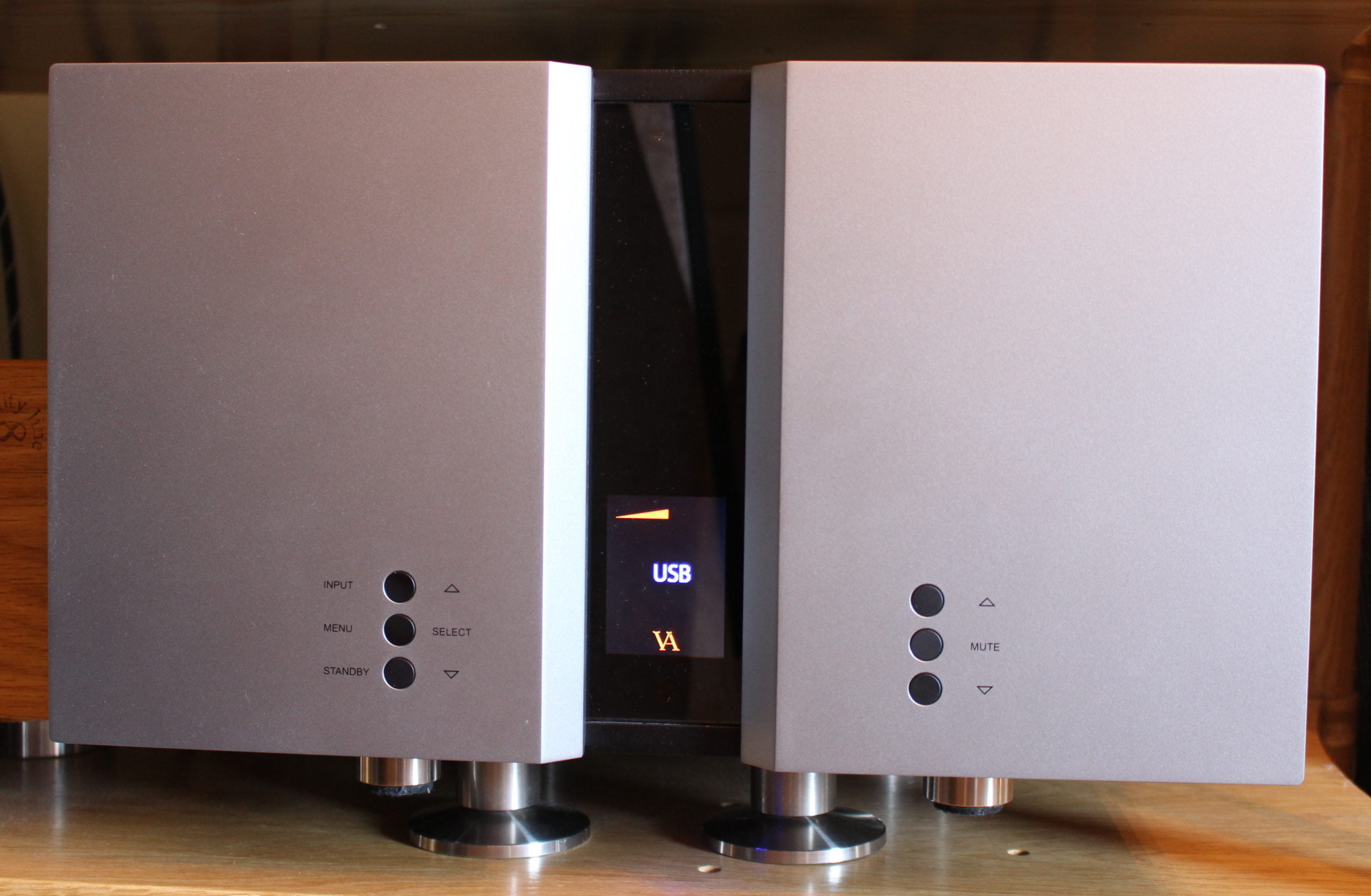Earlier this week Melco made the long awaited announcement that their EX Series of Digital Music Libraries are now Roon Ready!
There are plenty of Melco customers who already use Roon in one form or another but by adding the convenience of having the brilliant Roon interface usable on the Melco platform is a great addition to the Melco ecosystem.
In order to run Roon on your Melco EX machine you need to be running software 4.04b, for the time being this software can only be installed via a USB stick plugged into your Melco, 4.04b can be downloaded from the Melco website here. Your Melco has to be connected to a USB-DAC and you also need a computer or server running the Roon Core as well.
The Roon Core is essentially Roon’s operating system which manages your library, the metadata and integrates your streaming service with your own music. It’s an incredibly clever system and the interface is superb, without doubt one of the very best experiences in terms of browsing your own music, searching for new music and getting recommendations based on the music you like. It’s rare for someone to try Roon and not be impressed with the interface, there’s a lot you can do with it!
As well as simply browsing your own music via artist or album it integrates your Qobuz or Tidal favourites with your own music and the Discover function is excellent as well. Discover randomly selects part of your library based around a number of factors such as year of release, record label and genre among others, it is a really useful function. You also have Roon Radio, so if you are playing an album from your library Roon Radio randomly plays similar music either from your library or your streaming service once the selected album has finished playing, it’s a superb feature and another great function within the Roon interface.
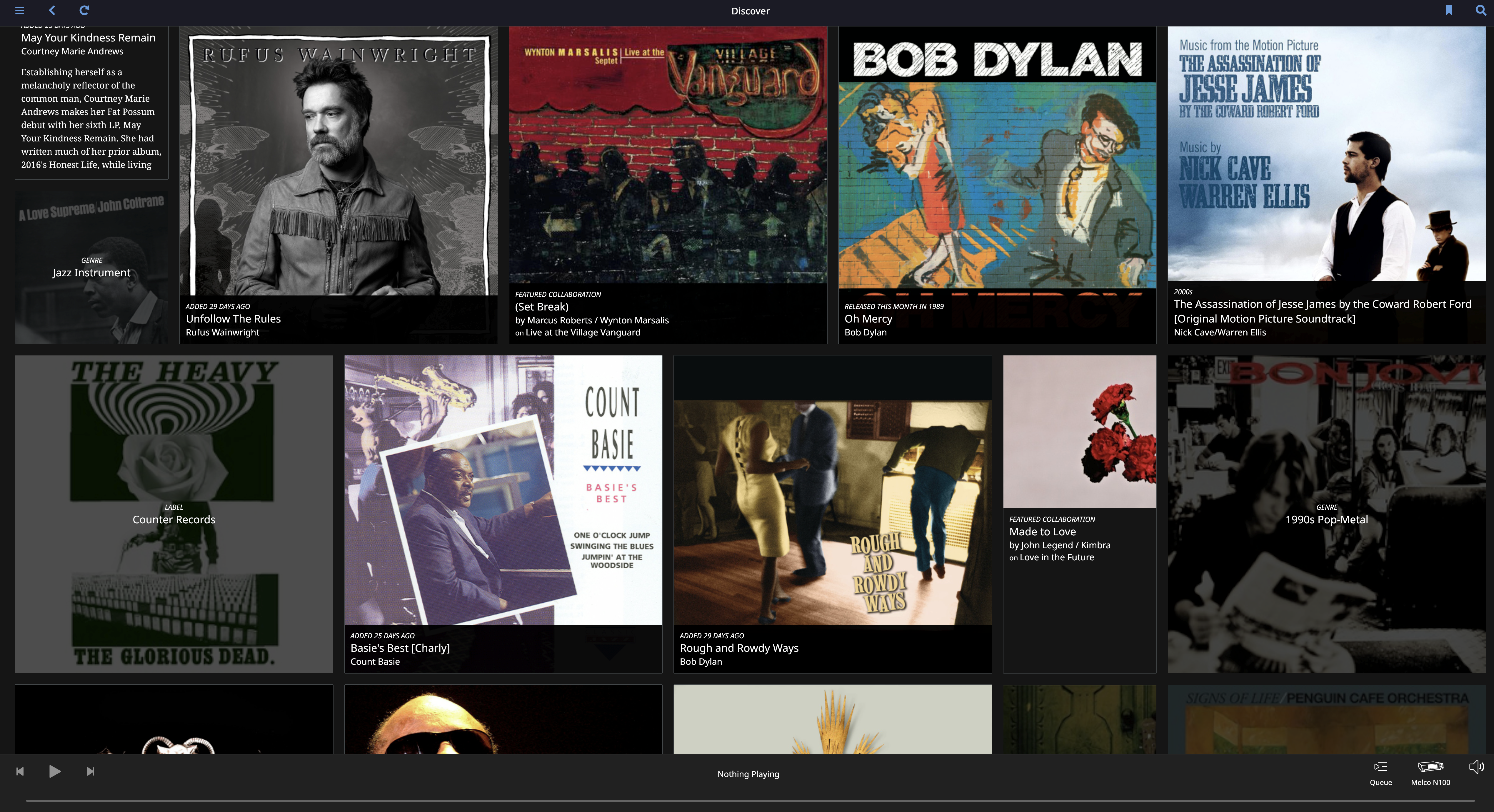
(These 2 images both show a Roon Discover screen with their random snapshot of different aspects of your library, in my opinon unbeatable for rediscovering music in your collection that simply gets lost within your library!)
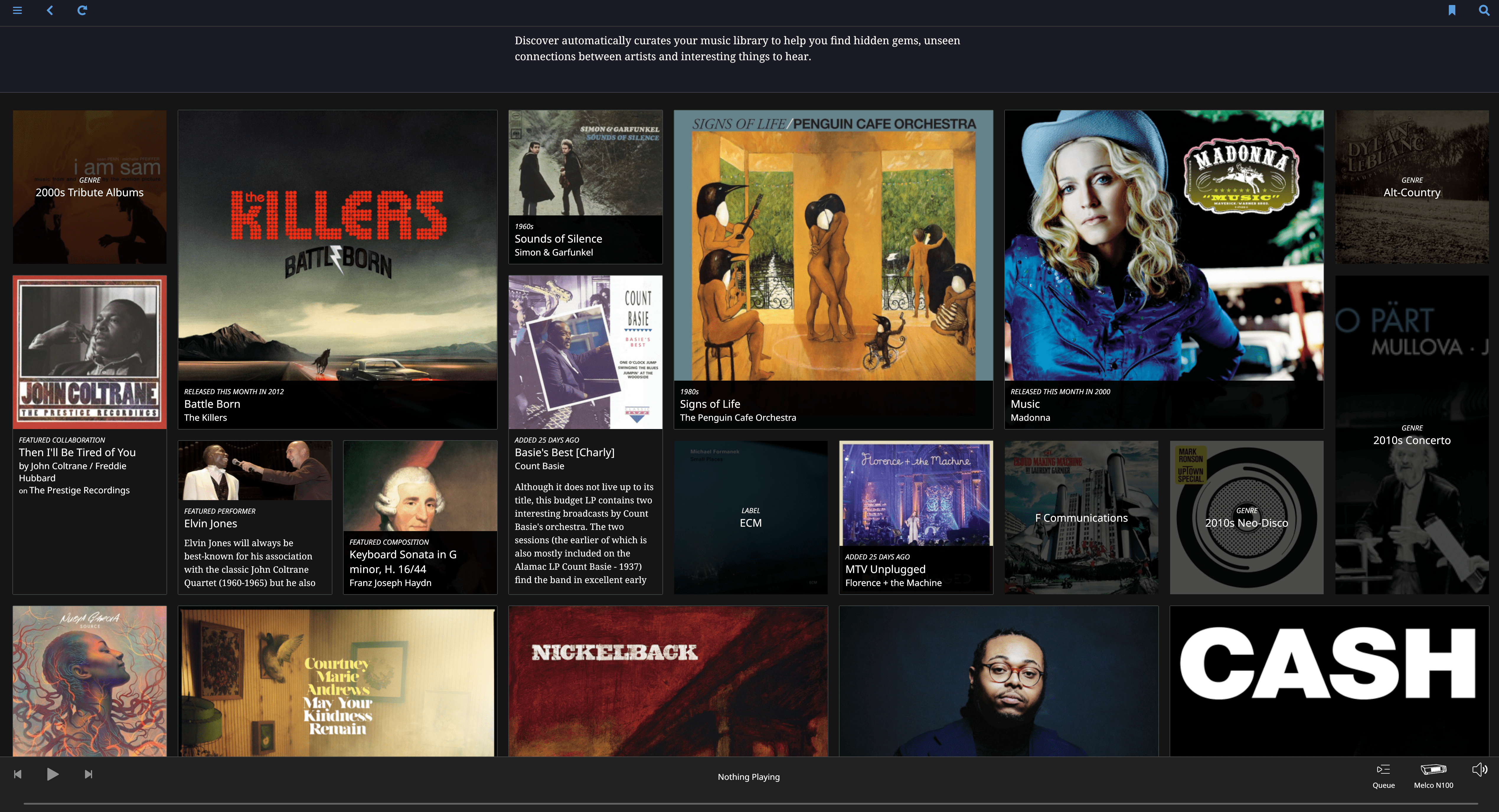
Once you are running 4.04b on your Melco you simply need to turn on the Roon Ready Controller Mode in the USB-DAC menu and you are good to go (once you have turned on Roon Ready mode any of the other control apps will not work). Your Melco will appear as a source (or Audio Zone) in the ‘Audio’ menu within Roon settings which you need to enable and within the storage settings of Roon you also need to point Roon at the Melco shares so it can see your music. Once done Roon will scan/interrogate your library to build its database, this may take a little while depending on the size of your library.
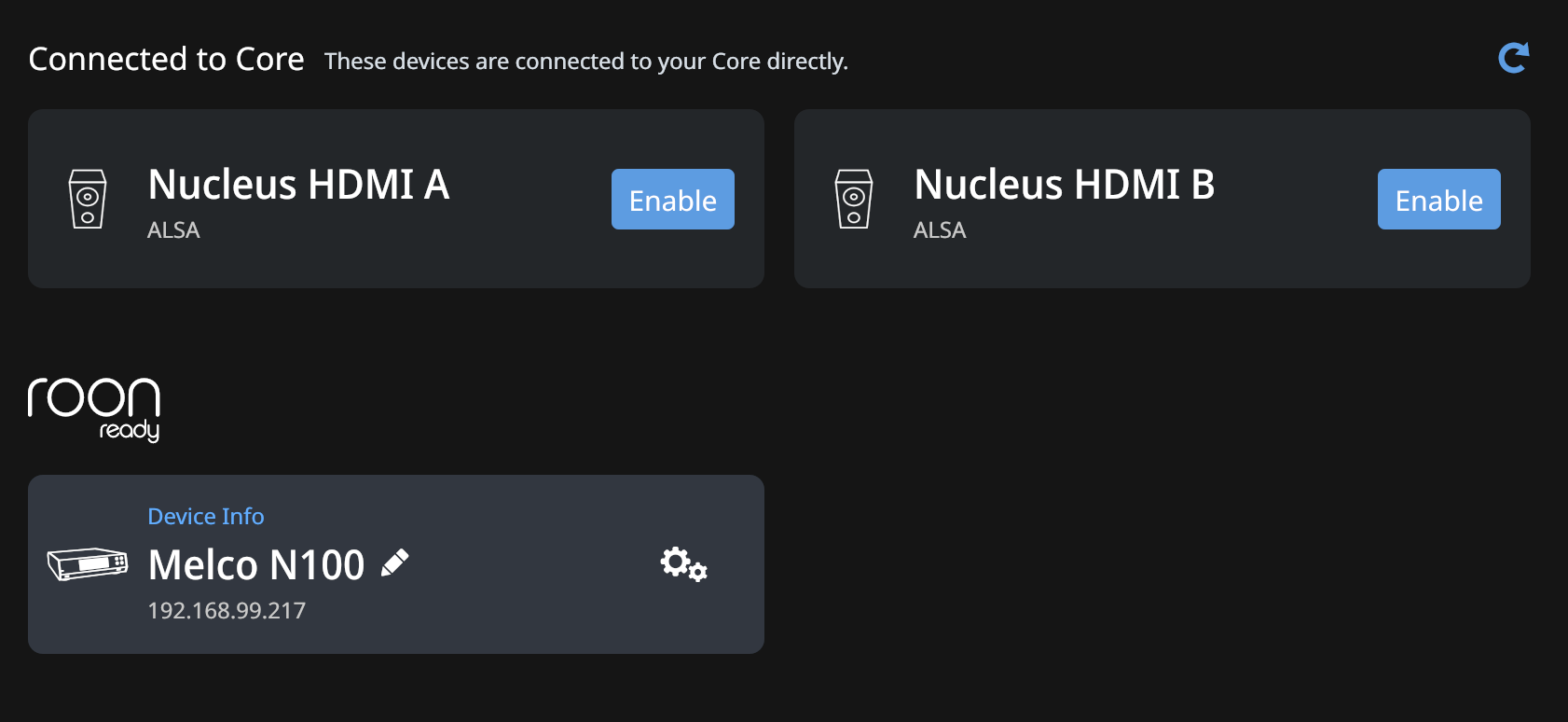
I’ve been a beta tester for Melco and I’ve had 4.04b installed on my demo machines for a little while now, it works flawlessly and is a real joy to use. In performance terms Roon is really good, but I must stress that it doesn’t sound as good as playing the same music stored on the Melco (running Minimserver) controlled by the Melco app, Linn Kazoo (or whatever app you use), this includes playing from Qobuz or Tidal as well.
I keep the full Melco range on demonstration and have tested all models into a variety of DACs (Exogal, Vitus and Gold Note) and it’s a consistent theme across all the DAC’s and all of the Melco models (my N10 and S100 were out on loan when I took these images)

From a testing perspective my demo system is configured with my router connected to a 24 port TP Link switch (or a 16 port Netgear switch), both switches are not connected to the network at the same time. Whichever Melco I have been using alongside my Roon Nucleus+ Core Server have been tested connected into both switches and directly into the router and the results were the same every time. I found that playing the Melco with Minimserver as the UPnP server and Linn Kazoo as the control point sounded much more engaging with better dynamics and an increased level of detail and clarity compared to the Melco switched into Roon Ready mode controlled via the Roon app. In comparison the Roon sounded slower, heavier, less detailed and more rounded in presentation. It’s certainly not offensive to the ear but definitely not as good as the traditional method.
The Roon ecosystem is essentially very processor intensive with the Core running 24/7 in the background and there is a lot more network traffic to contend with compared to the Melco playing in its traditional mode. When you select a piece of music to play via Roon that music is pulled from the Melco, sent to the Core, then sent back to the Melco before it is outputted to the DAC via USB, all in real time.
In its traditional mode the Melco receives the request to play a track from the control point and that is outputted to the DAC – the signal is not sent anywhere else and is a much simpler in essence.
I obviously keep the Melco S100 Switch on demonstration as well so after a good few days of listening to the various Melco models in my standard home network it was time to bring out the Melco switch to see what that would do to the performance. Anyone who is familiar with the S100 will be aware that there are 8 conventional ethernet sockets on the S100 (4 are rated at Gigabit, the other 4 are rated at 100Mb), there are also 2 SFP fibre ports on the S100.
Traditionally with the S100 the Melco itself is best connected to one of the slower 100Mb ports and the feed from the router should use one of the faster Gigabit ports. The Roon Core is better on a fast port (Gigabit) as well.
When using Linn Kazoo to play music from the Melco and also to stream 24 bit from Qobuz all files play perfectly when connected to a one of the slower 100mb ports, but interestingly when in Roon Ready Mode controlled via the Roon app the Melco was dropping out with any 24 bit music (music either stored on the Melco or from Qobuz). Switch back into the other controller mode (using Kazoo for example) – the dropouts are not present.
This is another aspect suggesting that the required network bandwidth needed by Roon is on the high side, higher than the 100mb limit on the 4 slower ports of the S100 hence the dropouts.
I disconnected the Melco from the 100mb port and reconnected it to one of the Gigabit ports – no dropouts at all, regardless file type, bit depth and sample rate.
Time to sit and listen…..with Melco and the Roon Nucleus connected to Gigaport ports of the S100 the presentation of the music via Roon changed instantly, no seconds listens or A/B comparison were needed. The music was instantly more informative, more dynamic and a lot more alive. Previously Roon sounded slow and ponderous in comparison, but now it has regained its drive and attack and I’m really struggling to tell Roon apart from the using the Melco with Minimserver and Linn Kazoo.
I tried the S100 in play with all the Melco models over the space of a few days and with every model, from the N100 and N1A/EX right up the N1ZS/EX the performance from Roon with the S100 in the system was dramatically better than without.

I also called upon a couple of good customers I know who have Melco’s in their systems who also use Roon to ask if I could call around so I could show them something……I wanted to repeat the test I had performed but I had no intention to explain my findings prior to them listening, I wanted the customers opinion on what they could hear without any influence from me.
First up was an N1ZH EX connected to a Vitus SD-025 DAC, this customer uses Roon around his house to control some Sonos and a couple of smart speakers, he has set up a headless server to run Roon Core. The customer picked 4 or 5 different tracks he knows well and we played them both ways, both the Melco and Roon Core are connected to his network via an 8 port Netgear switch (the blue metal bodied unit). With seconds of Roon playing the customer has passed comment that he didn’t think it sounded as good as via Kazoo/Minimserver as his feedback on the difference in sound almost echoed mine entirely, the music felt slower paced, less detailed with poorer ebb and flow and was simply not as informative or engaging to listen to.
So, the S100 was installed next, exactly in the same way as I had at home and instantly the customer was smiling – the music had come alive again. This customer argued the S100 was in some ways an expensive solution to make the Roon sound this good in his main system, but it was an expense he was willing to accept given his use of Roon throughout his home and he is certainly a big fan of the interface.
The other customer I visited has an N1ZS EX and a dCS Scarlatti Upsampler, DAC and Clock, he also has a Roon Core on a homemade headless server and uses Roon for music discovery via Qobuz, but his Melco via the Lumin app (with Minimserver 2) to listen to his own library. Essentially what happened was almost a carbon copy of what happened with the first customer. The S100 really made an impressive impact to the performance of the system. Cue 2 S100 installations and 2 very happy customers!

In conclusion I must stress, I’m not down on Roon or against it – it’s a brilliant piece of software, the interface is the best out there and it genuinely can change the way you listen to music and also introduce you to new music you wouldn’t ordinarily find and I really enjoy using. I sell their dedicated Nucleus Core Server as it simply works and is a really elegant turnkey solution for Roon, but there is no getting away from the sonic facts that the Melco performs significantly better when running Minimserver (and Twonky to be fair) controlled via whichever conventional control point you like the best.
The Roon Core is very processor intensive and the audio signal is passed from the Endpoint (the Melco) to the Core, before it is returned to the Endpoint prior to being outputted via USB. Networks are noisy at the best of times, but we are dramatically increasing the throughput on the network with Roon and that additional data includes the ever so delicate audio signal we strive to look after.
The S100 has proved to be incredibly popular since it’s launch at the end of 2019, it’s a brilliant product and one which has genuinely exceeded my expectations. I’ve demonstrated it to quite a few people, most of whom were sceptical over a switch at this price point ‘switches can’t affect the sound as it’s all digital’ etc.
Ultimately when audio is being moved over ethernet the limiting factor is the network itself and the components used on the network, typically noise levels are high, cheap power supplies don’t help either. The S100 has been designed from the ground up as an audiophile product and not an IT accessory. It contains a custom mainboard and a large packet buffer to deal with excessive network activity. The benefits the S100 offers are obvious when you listen to it, I’ve not yet done a demonstration which hasn’t impressed.
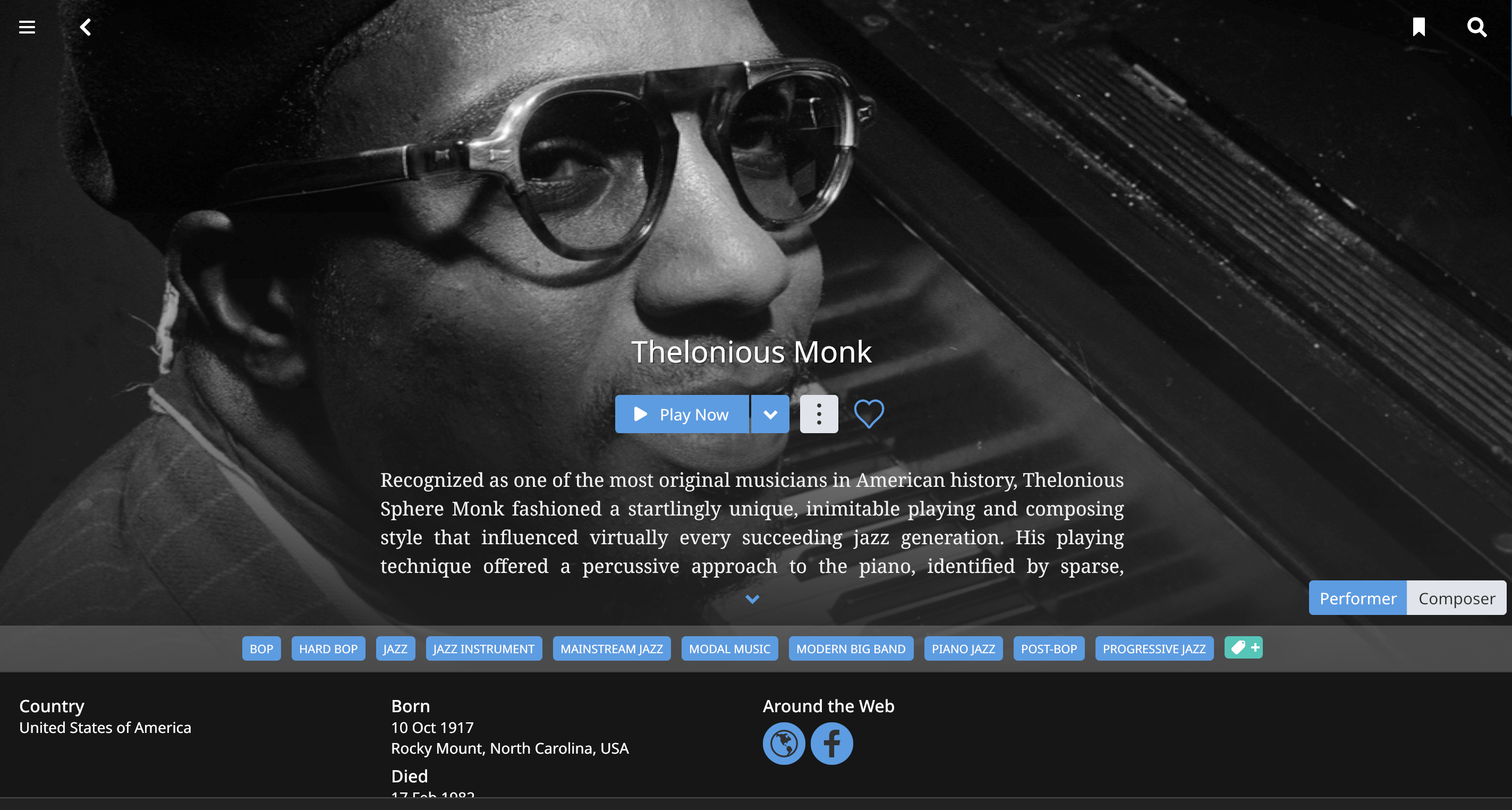
To finish off, Roon is a great addition to the Melco EX Series, the interface is brilliant and in my mind is the best control app available today, the way it integrates your own music (on the Melco) along with your saved favourites from Tidal/Qobuz is superb, as is Discover, Roon Radio and the way it presents recommendations and all of the rich links and detailed information it provides. From a performance point of view it sounds good and will be perfectly acceptable for many people in many systems, but for me and the customers I have demonstrated it to so far (who both have pretty serious systems) the Melco with Kazoo/Minimserver did outperform Roon from a sonic perspective, the addition of an S100 does level the playing field quite easily so that is a serious option for those who want the very best performance and the very best interface. As always I’m happy to chat or converse via email if anyone has any questions, or if you want to organise a home demonstration don’t hesitate to get in touch.

